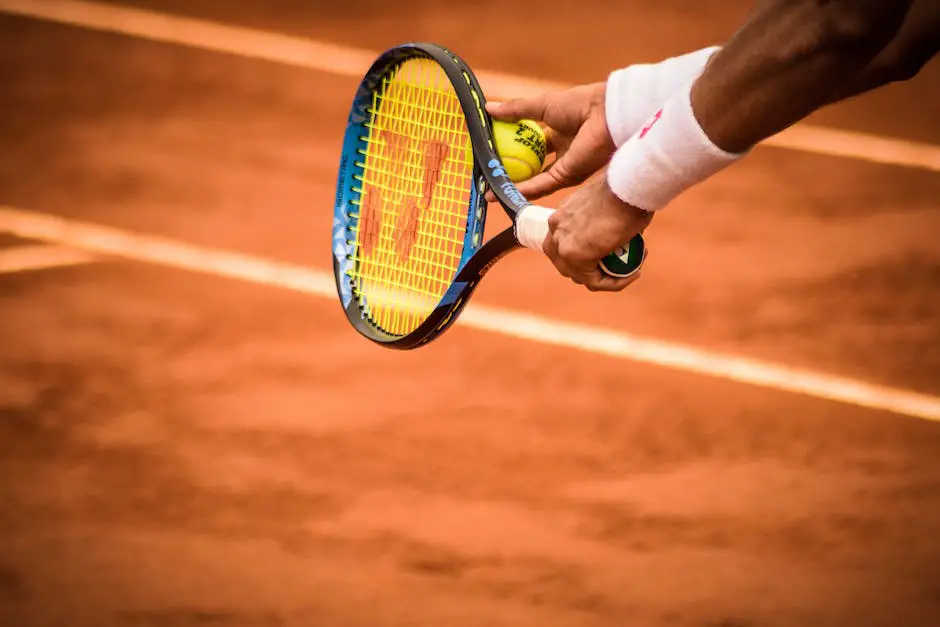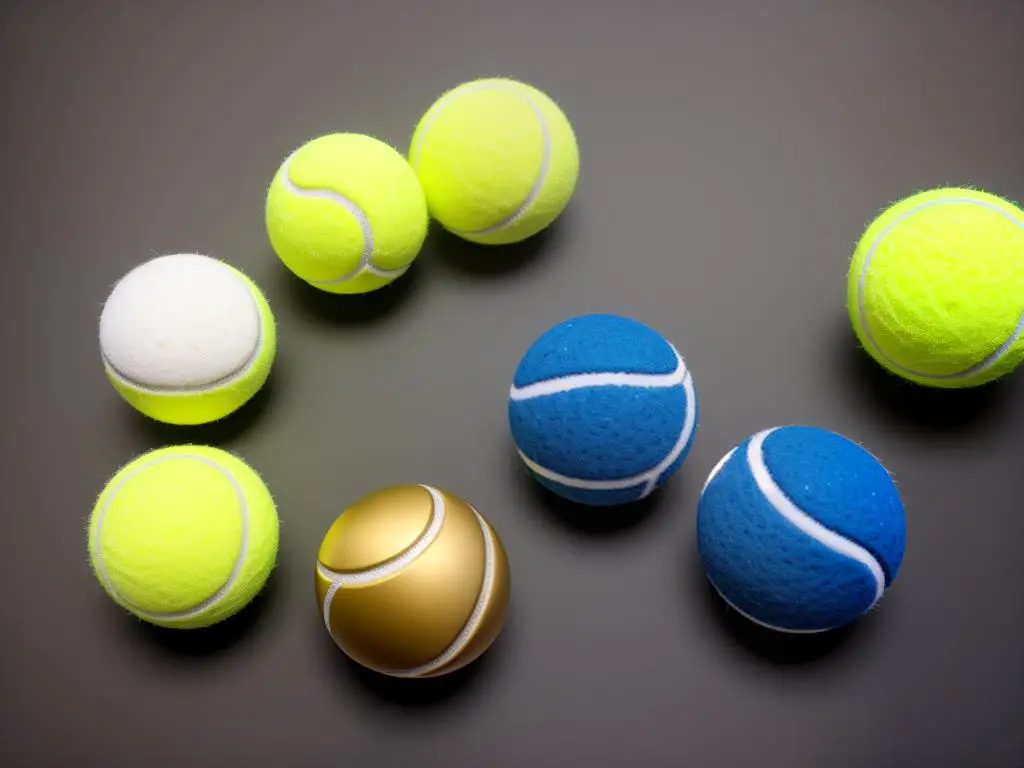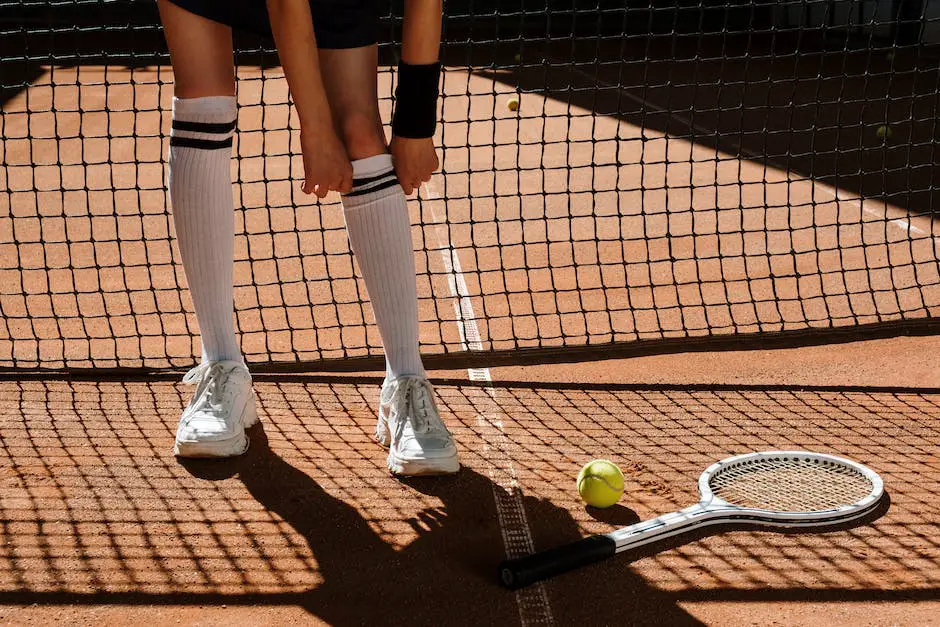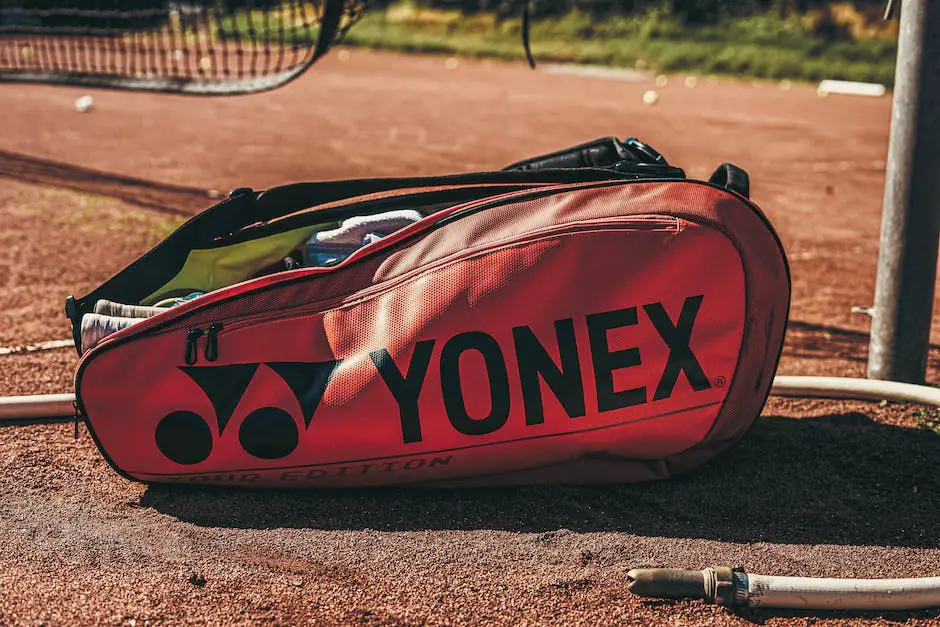Stepping onto the tennis court requires more than just talent and practice, it also entails utilizing the right equipment. Tennis is a game profoundly impacted by the gear used, and this extends beyond merely the racquet and the ball. Our aim is to provide you with an enriching understanding of the complete spectrum of tennis equipment. From enlightening you on the nuances of selecting the optimal racquet, directing you to the right tennis balls, guiding you through the importance of quality tennis apparel and footwear, to elaborating on other fundamental tennis accessories, this guide promises to unveil crucial insights to enhance your court performance.
Understanding Tennis Racquets
Understanding Tennis Racquets: Various Types & Uses
Tennis racquets come in a wide variety of types that cater to players of all skill levels. On the surface, racquets might look alike, but they differ significantly in size, material, and design. These differences can greatly influence gameplay and the learning curve for a player. Therefore, understanding these traits can help players make a more informed decision when buying gear.
Tennis Racquet Sizes
Tennis racquets are available in various sizes. The most crucial measurement is the racquet’s head size. The head size impacts the racquet’s power and control. For instance, a larger head size offers more power and has a larger sweet spot, ideal for beginners. In contrast, a smaller head provides more control and is favored by advanced players.
Materials Used in Tennis Racquets
The material used to manufacture a tennis racquet significantly affects the racquet’s feel and performance. Common materials include aluminum, graphite, and carbon fiber. Aluminum racquets are affordable and light, making them suitable for beginners. On the other hand, graphite racquets are lightweight yet powerful, the preferred choice of experienced players. Meanwhile, carbon fiber racquets are known for their exceptional durability and control, although they are often a bit heavier.
The Influence of Brand Differences
Brand differences play a critical role in the purchase decision. Leading brands like Wilson, Babolat, HEAD, Prince, and Yonex have a profound history and reputation in racquet manufacturing. Each brand offers unique proprietary technology and designs that cater to different types of players and their gameplay. For instance, Wilson racquets are known for their enhanced sweet spot and control, while Babolat models have a reputation for power and spin.
Different Parts of a Racquet & Their Impact on Gameplay
A racquet comprises several parts, each significantly influencing gameplay. The head size, as previously mentioned, influences the power and control of the shot. The grip size plays an essential role in controlling the racquet and preventing injuries like tennis elbow. A correctly sized grip can provide better control and reduce the chances of getting injured, and grip size usually varies from 4 inches for juniors to 4 3/8 inches to 4 5/8 inches for adults.
The string pattern also directly impacts the performance of a racquet. The two common string patterns are open and closed (or dense). An open string pattern provides more power and spin but has less durability, whereas a closed string pattern offers improved control and extended string life.
Wrap-Up
In conclusion, the selection of a tennis racquet is a personal decision that depends on several factors like the player’s skill level, style of play, and individual preferences. By comprehending the significance of each aspect, you can make an informed choice that will likely enhance your performance on the court.

Choosing the Right Tennis Balls
Finding the Perfect Tennis Ball: Deciphering the Differences
Just as important as the racquet, tennis balls – which mainly come in two types, pressurized and pressureless – play a crucial role in the game. Pressurized tennis balls have a core filled with air or nitrogen, providing a higher bounce. They’re recognized for their lively feel and high-speed play, making them a popular choice in professional matches and tournaments. However, over time, these balls tend to lose their bounce as the internal pressure gradually leaks out.
Contrarily, pressureless tennis balls come with a solid rubber core, giving them resistance to bounce loss and making them long-lasting. These balls are usually recommended to beginners or for practice sessions due to their consistent bounce quality over time. However, compared to their pressurized counterparts, pressureless balls are heavier and necessitate more hitting force because of their solid core.
Choosing the Right Balls for Different Courts
Different courts often require different types of tennis balls. Regular duty tennis balls are suitable for indoor, clay, and grass courts as they are less abrasive and fluffy. They are lighter and possess a slightly decreased bounce. Conversely, extra duty tennis balls are ideal for hard court surfaces. They are designed with a thicker and denser felt which reduces wear and tear and enhances their durability.
Determining Player Skill Levels and Specific Match Requirements
The choice of tennis balls can also depend on a player’s skill level. Beginners and recreational players might prefer pressureless balls due to their durability and consistent performance. Intermediate and advanced players generally opt for pressurized balls due to their superior bounce and speed, which are more conducive to competitive play. Children and absolute beginners are often introduced to the sport using slower and softer balls, which come in stage-based ratings like Stage 3 (red), Stage 2 (orange), and Stage 1 (green).
Brand Differences and Ball Ratings
Brand preference may often come into play when choosing a ball, with the market being dominated by a few key players such as Wilson, Dunlop, and Penn. Each brand offers a diverse range of options catering to different player needs and preferences, and quality can vary across different models even within the same brand. It’s recommended to experiment with different brands and types to find the one that suits your style of play.
When it comes to ball ratings, the International Tennis Federation (ITF) is responsible for setting and maintaining standards for tennis balls. ITF grades balls based on their size, weight, deformation, and rebound, ensuring that only those balls that pass these rigorous tests can be used in official matches and tournaments.
Choosing Tennis Balls for Specific Match Requirements
Finally, there are also specialized tennis balls designed for specific conditions. For instance, high altitude balls are designed to perform at elevations above 3,500 feet where the air is thin, and they are less pressurized to compensate for the altitude. Similarly, there are also different balls available for individuals with color vision deficiencies, such as yellow or fluorescent balls to improve their visual tracking.
Understanding the nuances of tennis equipment, like the right tennis balls, can make a pivotal difference in a player’s game performance. An appropriate tennis ball doesn’t necessarily define the player’s skill, but it unquestionably amplifies their game and enriches the overall tennis experience.

Tennis Apparel and Footwear Guide
Choosing the Right Tennis Wear
Choosing your tennis attire is about more than just looking good on the court. The fabric, design, and weather suitability of these pieces significantly influence a player’s game. Polyester, nylon, and other synthetic blends are common in tennis clothing, thanks to their sweat-wicking qualities that help keep players dry and prevent overheating during intense play. Attire is typically designed for maximum mobility, featuring loose shirts and shorts or skirts for women.
Furthermore, dressing appropriately for the weather is key. Lightweight and sweat-absorbing clothing is recommended for hot conditions, while layers, sweatshirts, or jackets can help retain warmth during colder weather. Some brands even offer UV protection in their apparel—ideal for outdoor play.
Lastly, dependability matters. Go for brands like Nike, Adidas, or Wilson, known for their commitment to quality and durability in their tennis apparel range.
Importance of the Correct Tennis Footwear
Using the correct tennis shoes is as important as selecting a good racket. Footwear plays a crucial role in a player’s ability to move quickly and easily around the court. A good tennis shoe will support the foot, provide necessary traction for quick lateral movements, and cushion the impact of running on a hard court surface.
Selecting Tennis Shoes: Key Factors to Consider
When selecting tennis shoes, several factors come into play. First, the shoe’s fit is paramount. Too large, and the player’s foot will slide within the shoe. Too small, and discomfort or blisters can occur. Seeking professional advice for the correct size can be beneficial.
The type of court surface is another consideration. Grass, clay, and hard court surfaces each require different outsole designs and tread patterns for optimal performance. Durability is also a factor. While more durable shoes may be heavier, they typically offer better performance over time.
Finally, shoe cushioning is vital to absorb the shock of quick movements and reduce injury risk. Special technologies used in tennis shoes, like gel or air-based cushioning systems, can help enhance comfort and stability.
The Consequence of Choosing Wrong Tennis Footwear
When it comes to selecting suitable tennis footwear, opting for the wrong kind can have a catastrophic effect on a player’s performance, as well as increasing the risk of injury. Footwear that is ill-fitted or overly worn could result in instability, heightening the chances of sustaining foot or ankle injuries. Additionally, shoes that are inappropriate for the court surface can negatively impact traction, thereby reducing the player’s speed and agility. By regularly assessing and replacing your tennis shoes, you can safeguard optimal performance and minimize injury risk.

Other Tennis Accessories
Importance of Appropriate Tennis Bags
An indispensable accessory for any committed tennis player is the tennis bag. These bags offer ample space for storing necessary items such as a water bottle, towel, balls, and, most importantly, your racquet. A multitude of design options are available, like backpacks, tote bags, and other specialized bags with compartments specifically designed to ensure your racquet’s safety. When on the hunt for a suitable tennis bag, keep in mind its carrying capacity, material used, the comfort it provides, and durability. Opt for a bag that can accommodate all your gear, can withstand regular usage, and is easy and comfortable to carry.
Grips
Grips are crucial for maintaining control of your tennis racquet. A good grip will not only improve your handle on the racquet but also prevent slips that might lead to mistakes. They come in many materials including synthetic and leather, with each providing unique levels of comfort and sweat absorption. Some players prefer overgrips, which are applied over the original grip for added thickness and comfort. Thickness, texture, and material are factors to consider when buying grips.
Tennis Strings
Tennis strings directly impact how the ball feels when it hits your racquet and how it reacts upon impact. They are an integral part of a player’s control, spin, power, and comfort while playing. There are four main types of strings: natural gut, synthetic gut, polyester, and multifilament. Each type offers a different balance of durability, playability, power, and control. When considering strings, the gauge or thickness should be noted, as a thicker string offers more durability while a thinner string delivers more power and feel.
Vibration Dampeners
Vibration dampeners are small devices that are fitted to the strings of the tennis racquet to reduce vibration and the resulting sound when the ball strikes. While they don’t dramatically alter the performance of the racquet, they can add to the comfort of the player by reducing the string vibrations felt in the hand and ultimately reduce the risk of tennis elbow. Their utility comes down to personal preference and comfort.
Tennis Training Aids
Training aids come in a variety of forms, each designed to enhance a specific aspect of your tennis game. Ball machines are among the most common and allow players to practice their strokes without a partner. Similarly, rebound nets return balls at different angles and speeds, providing diverse practice scenarios. Training aids like cones, targets, and speed ladders can also help improve agility and accuracy. When purchasing training aids, consider your skill level, what aspect of your game you want to improve, and whether you have the space and budget to accommodate them.
In addition to the items discussed above, other potential accessories can include wristbands to manage sweat, tennis elbow braces for added arm support, and tennis shoes designed for the court surface. When purchasing any tennis accessory, it boils down to personal comfort, skill level, and personal preference. It’s best to test different types and brands to find what works best for you.

Equip yourself not only with a comprehensive understanding of skills and strategies required for tennis but also the substantial knowledge of equipping the right gear. Harness the essence of having a well-serving tennis racquet, appropriate tennis balls, comfortable and supportive attires and footwear, and handy accessories. This guide served to give you an enriched perspective and valuable insights into the various factors shaping your choices in tennis equipment. Let it be a foundation for your purchases, fueling your passion for tennis with performance-enhancing gears. Embrace the game with confidence, backed by the right equipment, and let every swing, leap, and run promise a heightened tennis experience.